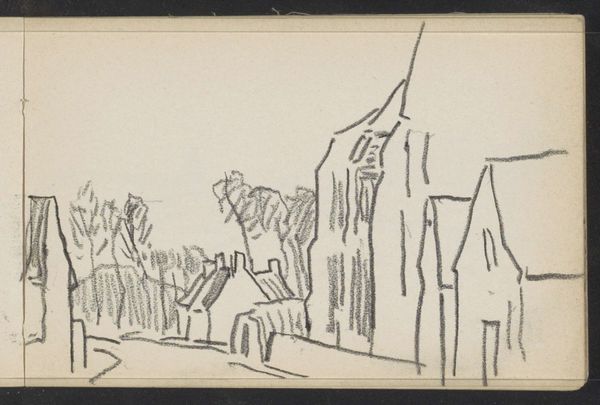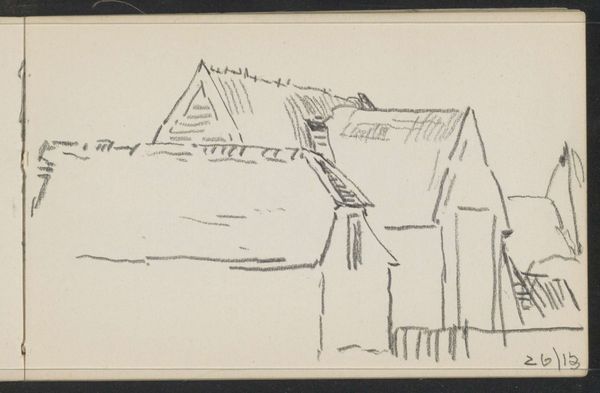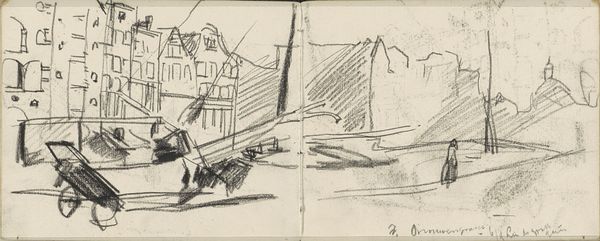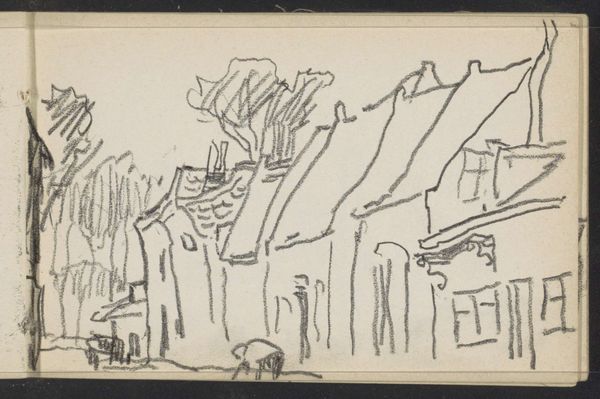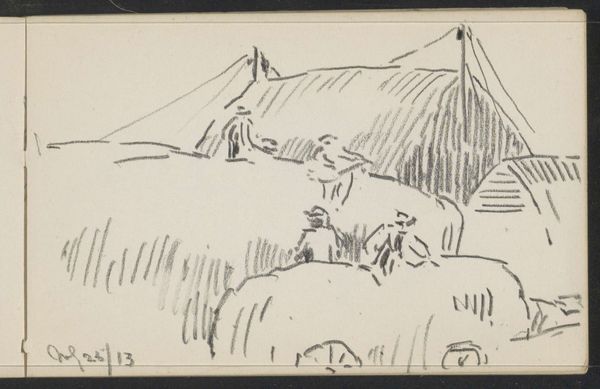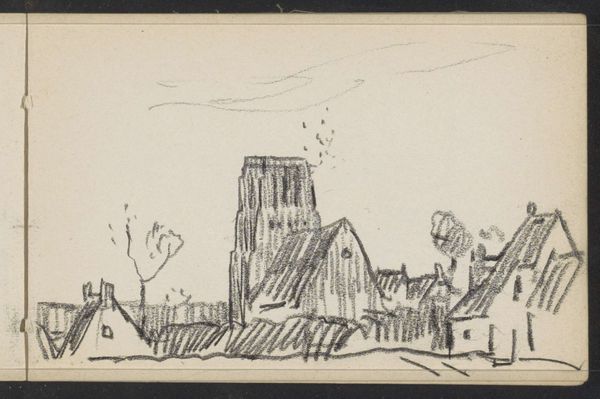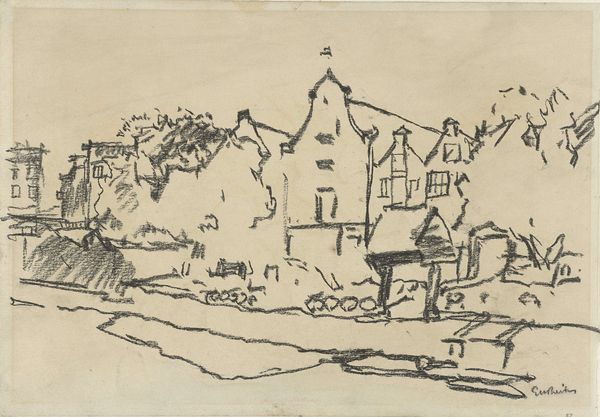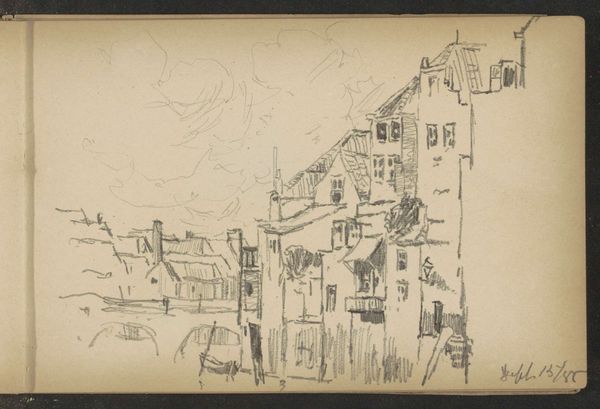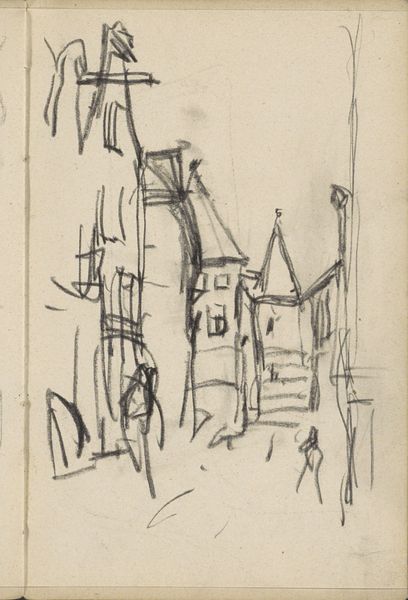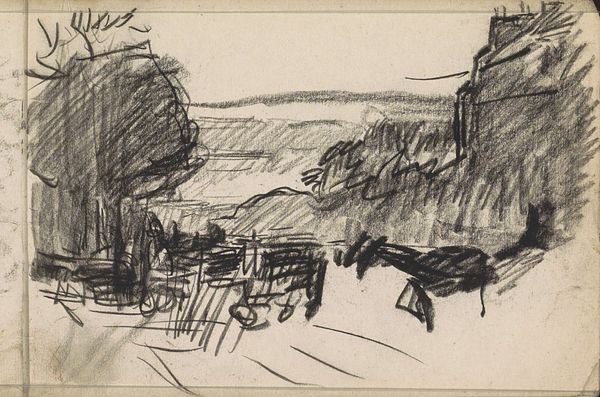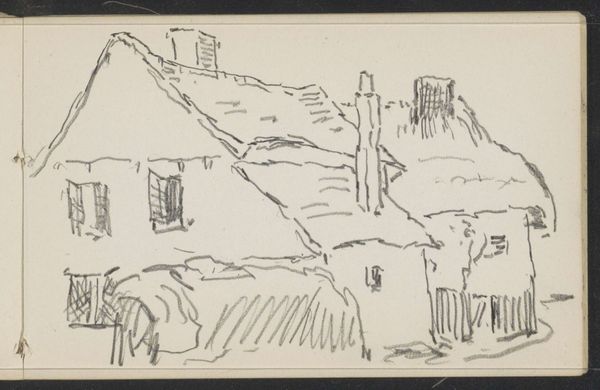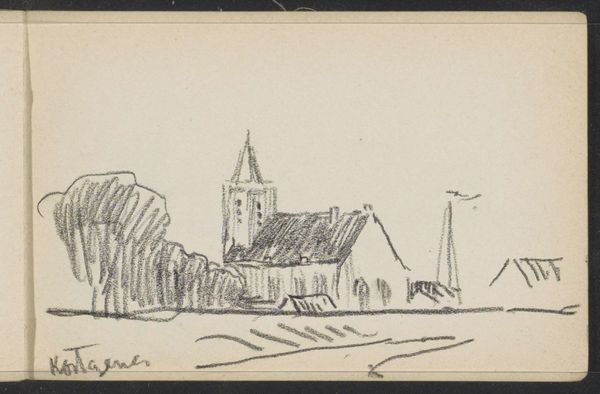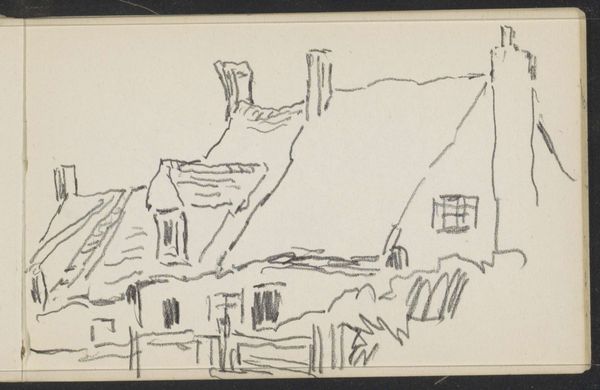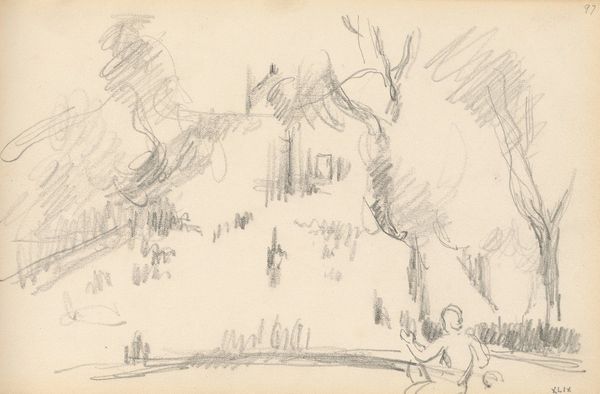
Copyright: Rijks Museum: Open Domain
Editor: Here we have Alexander Shilling's "Omheind huis aan een weg," or "Fenced House on a Road," likely created between 1913 and 1917 using pencil and ink. There's something so immediate and raw about this sketch; I’m curious about the narrative Shilling might have been trying to capture in such a simple, unassuming scene. How do you interpret this work? Curator: What strikes me is the boundary – that very assertive fence. Think about Russia during this time, right before and during the revolution. There’s an intense struggle concerning land ownership, the peasantry, and this longing for individual space. This fence, rendered so prominently, speaks volumes about claiming territory. Editor: So you see it as less about the picturesque landscape and more about the socio-political climate? Curator: Absolutely. Consider who likely lived behind such a fence versus who was outside of it. Who controlled resources and access? The style also plays a part – impressionistic sketches were sometimes used to quickly document scenes with social or political weight, think about Daumier’s lithographs. Do you notice how even the foliage on the left seems to press against the edges of the composition? Editor: I do, almost as if the wildness is encroaching upon the domesticated space. That makes me wonder if the "road" in the title symbolizes social mobility or perhaps the lack thereof for the figures at the doorway. Curator: Precisely. Are they being welcomed, or observed? What does the simple act of rendering them small relative to the building signify? Shilling’s piece speaks of the power dynamics embedded even in the most mundane rural scenes, asking us to question who holds power and how they protect their privileges. Editor: That definitely gives me a new perspective on something I initially viewed as just a charming landscape drawing. The fence is a stark reminder of divisions that resonate throughout history, even today. Curator: Indeed. Art becomes a mirror, reflecting not just what we see, but also the systems that shape what we’re allowed to see.
Comments
No comments
Be the first to comment and join the conversation on the ultimate creative platform.
